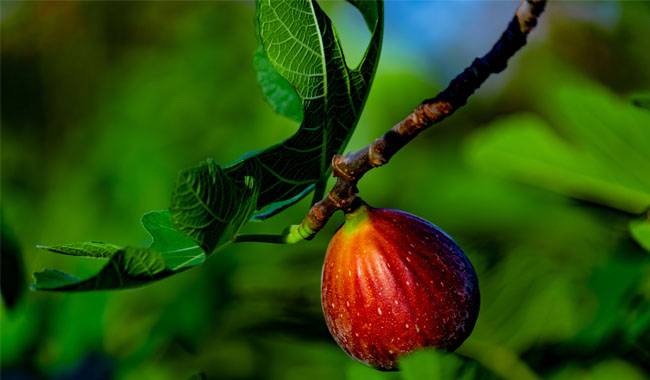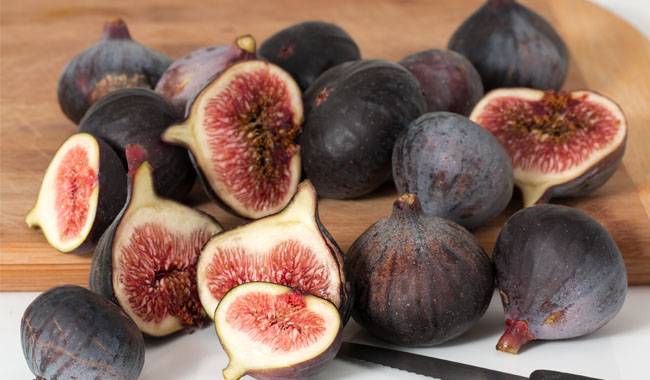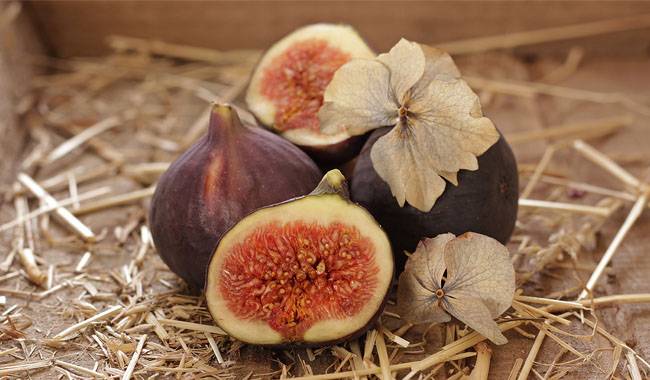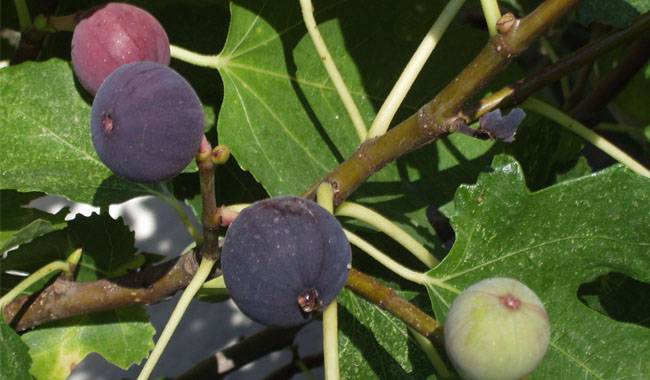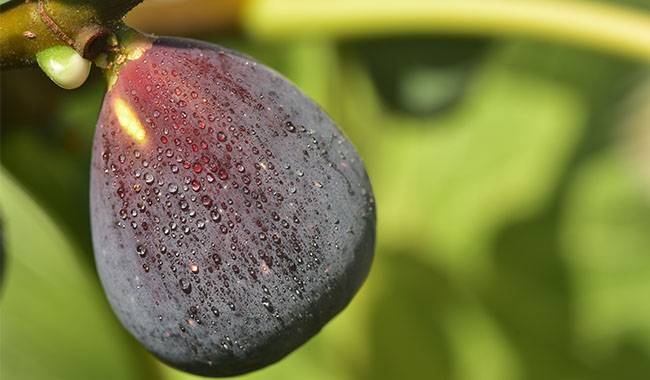
How do figs grow? Figs have a well-developed root system and flourishing branches, and the choice of soil is not strict, with a wide range of adaptability.
But the most suitable soil conditions for the soil layer of deep loam or sandy loam, soil clay-heavy, shallow root distribution, resistance to early ability to decline, the water table is too high, poor drainage will inhibit the root respiration, the tree is weak, low yield.
Figs like weak alkaline or neutral soil, the most suitable upper soil PH for 7.2-7.5. belong to the more salt-tolerant fruit trees, the demand for calcium, so in acidic soil will affect the root system vitality, must increase the application of lime to improve the soil.
- The soil should be weakly alkaline.
- Pluck new branches when they reach four or five leaves, keep plucking, and do not let the branches exceed 1 meter.
- Start fertilizing only after fruiting.
- Big water and fertilizer before fruit ripening. Fruit growth and development can be foliar spray 0.2% dihydrogen phosphate potassium and other foliar fertilizers to increase fruit size and improve yield.
- figs to thin the fruit, do not give up while picking the secondary tips.
- when the fruit is ripe, and each removes a fruit, and its adjacent leaves should also be removed, so that other fruits continue to grow and grow sweet
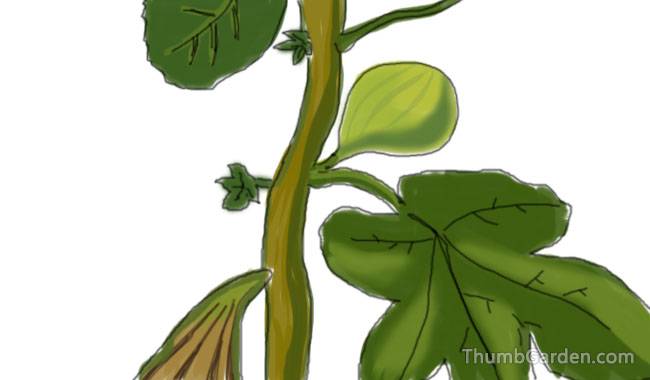
Watering
Figs do not tolerate water-logging, more drought-resistant, daily watering master “see dry see wet” principle (“see dry see wet” is a common term used when planting flowers, meaning that when watering a watering thoroughly, and then wait until the soil is slightly dry before watering a second time, its role is to prevent watering (Too much watering leads to root rot and pests and diseases caused by humidity).
Figs in the spring and autumn can be appropriate more watering, keep the soil moist, summer fruit expansion period should be watered 1 to 2 times a day, the dry season should be appropriate to increase the number of watering.
Fertilization
The ratio of calcium: nitrogen: potassium: phosphorus = 1.43: 1.00: 0.90: 0.30. The ratio of nitrogen, phosphorus and potassium is 1.0: 0.5: 0.7 for young trees and 1.00: 0.75: 1.00 for adult trees.
The base fertilizer, preferably organic fertilizer, is generally applied during the dormant period after leaf drop, requiring 1kg of yield to 1.0-1.5kg of organic fertilizer. open a strip ditch or circular ditch applied to the underside of the branch spreading.
On the basis of sufficient base fertilizer, fertilizer should be chased (soil application or foliar spray) 5-6 times a year. Nitrogen fertilizer in the early stage of growth, phosphorus and potassium fertilizer in the late fruit ripening period, and supplementary calcium fertilizer (soil application, leaf spray can be).
Soil fertilizer should be combined with watering, open furrow fertilizer, mulch watering, do not advocate surface spreading.
Figs like fertilizer, focus on tree fertilizer.
The first time for the early spring sprouting fertilizer, mainly nitrogen fertilizer; when the start of sprouting, sprinkle a large amount of nitrogen fertilizer to the ground, immediately drench the nitrogen fertilizer washed into the soil, and then every month to apply nitrogen fertilizer, a total of three times until the start of fruit.
The second time is fruit fertilizer, when the first fruit expansion period, nitrogen and phosphorus with the best application; in the main trunk of the tree 50cm (19.6inch) dig 3 ~ 4 deep 30-40cm (11.8-15.7inch) hole to apply.
The third time is overwintering fertilizer, applied before winter, mainly potassium fertilizer, just cover the base with grass ashes.
Water must be replenished promptly according to moisture conditions. The main water demand periods for figs are the germination period, the new growth period, and the fruit growth and development period. Irrigation methods in addition to the traditional furrow irrigation, cave irrigation, drip irrigation, and sprinkler irrigation can be carried out when available.
Fig flooding should not be too much, especially during the fruit ripening harvesting period, to avoid excessive changes in soil dryness and humidity, should always maintain stable and suitable soil moisture, so as not to lead to increased fruit cracking.
In addition, fig drought resistance, waterlogging resistance is weak, in the rainy season to pay special attention to timely drainage, timely hoeing, and loosening of soil after the rain.
Pruning
In the U.S. East figs in the open field cultivation of rough, mature trees without special management, branch growth can naturally form a large crown, but late and little fruit, often autumn fruit before the weather has turned cold, there is no harvest. So need to be timely picking, do not make it continue to extend, in order to facilitate the lower branches of the fruit early maturity and secondary fruit maturity, picking the time, the number and the amount of fruit left must be moderate, both to benefit the results of the year, but also to benefit the growth and results of the next year’s tree.
Picking can inhibit new growth, reduce branch length, promote budding branches, increase the branching of large branches or the base of the backbone. Therefore, the new growth period of the heart can promote the production of secondary branches, conducive to expanding the crown, young trees with more.
In addition, in order to promote the new growth of the year mature full, can be in the new slow-growth period heart picking, can promote flower bud differentiation, conducive to early fruit maturity, and can improve the weight of a single fruit.
The heart picking period generally in mid-July to early August is appropriate. And cut off the fruitless branches, the fruit is almost ripe when the lower leaves are selected in time to increase sunlight and make nutrients concentrated supply figs.
Figs have the characteristics of new branch results, new branches as soon as the ground began to bear fruit, long a leaf seat a fruit, until the top.
Therefore, the new branches should generally be retained, the unwanted branches should also be cut off after the results. Renewal of senescent branches is appropriate once every five years, from late autumn to early spring during the sprouting period.
The top of winter branches have buds for next year’s summer fruit, so be careful not to cut them off as much as possible to avoid affecting the summer fruit yield. Bud blotting is the removal of side shoots from branches during the growing season.
The main purpose of bud wiping is to reduce nutrient consumption and prevent the sprouting buds from being born on unfavorable parts and affecting the light of the canopy.
The period of bud wiping should be early, can reduce the consumption of stored nutrients, tree potential, weak trees should try to wipe buds, in order to concentrate the supply of stored nutrients to stay buds to produce strong branches.
Strong trees, the germination period is a little later, and often uneven, bud wipe period can be appropriately delayed, to belong after a period of time, remove too strong buds, select the growth of consistent, medium to strong bud growth.
FIG TREE MANAGEMENT IN ALL SEASONS
Spring
At the beginning of spring, fertilizers such as lime, and magnesium should be spread around the fruit trees.
Apply a good base fertilizer from late February to early March before the buds sprout. Sprinkle a large handful of nitrogen fertilizer around each fig tree first, then drench with water to enhance the growth of leaf buds.
Dig 3 to 4 holes 30-40cm (11.8-15.7inch) deep around the tree at 50cm (19.6inch) from the main trunk and put 20kg of well-rotted stable manure and 0.5 to improve the sweetness of the fruit and the tree’s disease resistance.
At the same time, calcium also has the effect of inhibiting the growth of new tips, which is conducive to improving yield and single fruit weight, so additional calcium fertilizer must be applied. From February to April every year, fig trees are often damaged by mealybug, which affects the budding and growth of branches and leaves.
In early February, when mealybugs start to get on the tree, the soil is shallowly planed 5cm deep within 1m of the main trunk, then the ground is evenly sprayed with 1000 times of phoxim and then covered with plastic film to kill the emerged mealybugs.
It can also be used to smear the main trunk for 1 week with an appropriate amount of diesel oil, about 10cm (3.93inch) wide, and then wrap the film, which can stop the mealybugs from coming up to the tree.
In early spring, February to March, the temperature rises, the fig tree transpiration water loss, but the ground temperature is still low, the root system has not yet been activated, can not absorb water in time, resulting in water loss of branches, the phenomenon of drawback, spring often to the tree spray water can reduce drawback.
Fig budding force is strong, in order to reduce nutrient consumption, can be in the spring when the leaves 2 ~ 3 times to thin, 5-year-old trees can leave 50 ~ 60 fruiting branches per plant.
Summer
Late May to early July, the temperature is suitable, sufficient light, for fig bud differentiation and new growth of the peak period, should be timely supplementation.
Generally in early June and early July, two fertilizer chases should be carried out. At a distance of 50-80cm (19.6-31.4inch) from the main stem, dig a circular trench 15cm deep and apply 200-250g of diammonium phosphate.
In addition, overly dense, weak, and long branches should be thinned out in late June and early July to improve the ventilation and light conditions of the tree, moderate apical dominance, reduce nutrient consumption, and promote flower bud differentiation and fruit development.
Autumn
In early August, when figs start to bear fruit, in order to promote the differentiation of flower buds, to facilitate the early maturation of fruit and fruit uniformity, to the long new tips to pick a heart.
Secondly, we should reasonably chase fertilizer, prevent over-fertilization, resulting in fertilizer damage, nitrogen, phosphorus, potassium fertilizer should be appropriate with the fertilizer concentration should be small.
General growing season every half month to apply 1 soaked and fermented soybean cake water, animal horn water, or urea dilution.
In the fall, late August can be applied 1 nitrogen, phosphorus, and potassium compound fertilizer or over a bowl of calcium acid, bone meal and grass ash, etc. July to August rain, pay attention to the timely exclusion of water around the fig tree.
If the soil moisture is too much, it will reduce the sweetness of the fruit or cracked fruit, and even the whole plant will die. July-September flower bud differentiation and fruit ripening period need more water, July-October watering once a day, but irrigation should not be too much, in order to soak the root layer to a degree.
When figs are ripe, they often emit a sweet smell and attract swarms of ants to feed on the tree, and the fruit is often bitten out of the hole or even hollowed out, losing its edible value.
In order to control the damage of ants, you can apply mucilage or diesel fuel mixed with a small amount of octinoxate on the trunk of the tree to stop ants from harming the tree or pick the fruit with the stalk in time when it is almost ripe.
The signs to judge the maturity of the fruit are bright skin color, uniform coloring across the board, glossy; soft fruit flesh, loose skin, fine wrinkles; fruit neck facing down, fruit pendulous.
Winter
Figs are native to the tropics and subtropics, preferring warm climates, and are less resistant to cold and low temperatures. Frost damage often occurs when attacked by cold spells or low temperatures, the bark crumples and the color turns brown.
In order to prevent frost damage, after the leaves fall in November, we should apply more organic fertilizer, water thoroughly and cultivate the soil before the freeze, and promptly carry out the branch trunk white. Before the onset of winter cold, use corn stalks tied into bundles and erected in a circle around the tree to protect against wind and cold.
Fig young tree growth period, such as the base fertilizer is not enough fertilizer should be chased. The method is to apply about 5 kg of well-rotted miscellaneous fertilizer at about 40 cm (15.7inch) from the main root.
For potted plants, apply at least 1 kg. Mature trees plant into about 15 kg of well-rotted agricultural fertilizer, potted to be applied to about 2 kg, before and after the fall of leaves into the base fertilizer, chasing fertilizer is appropriate in the new peak period and fruit rapid expansion period is good.
Figs are more fertilizer-tolerant fruit trees but should be given more weight to phosphorus and potassium fertilizer, figs are very strong growth, fertilizer is very much needed during the reproductive period. Base fertilizer organic matter in about 1000 ~ 2000 kg per division.
After planting, the annual fertilization of nitrogen, phosphorus, and potassium is about 1.5, 1, and 1 kg per division. In the third year when the plant enters the stable production period, the annual fertilization of nitrogen, phosphorus, and potassium should be 15, 15, and 15 kg per division, otherwise, the branches and leaves will grow too vigorously and affect the results.
Because it is more tolerant of drought but not waterlogging, new growth and fruit expansion period requires more water, but long-term impregnation or waterlogging heavy environment, easy to cause flower drop, fruit drop, leaf drop, and even death, so also pay attention to good drainage.
Potted plants should also pay attention to drainage, especially after heavy rain or rainstorm and continuous rainy season, pay attention to rain cover or inverted pots to control water.
Before freezing, water thoroughly and cultivate the soil. Before the winter cold snap, tie corn stalks into bundles and erect 1 circle around the tree to protect it from the wind and cold.
In general, new shoots may suffer from frost damage when the temperature falls below -10°C (14°F), and when it reaches -15°C (5°F) to -17°C (1.4°F), all branches above the ground may be frozen to death. In the north, it is not possible to just mulch but to wrap all the main trunks.
The frost resistance of fig trees is related to the age of the tree, with young trees from 1 to 3 years old having the weakest cold resistance and gradually increasing cold resistance as the age of the tree increases. As far as the varieties are concerned, the cold resistance is relatively strong in the green peel, ningselect, Tanigawa, Blanquette, and Japanese purple fruit.
Figs do not bear fruit, you can use a shovel to shovel around the roots in winter, it should help, figs like the roots to be repaired. Figs bear fruit on the annual new growth.
This result in habit and grapes, persimmons, but it also has its own characteristics: in addition to the end of autumn in the leaf axils at the top of the new tips differentiate receptacle primitive body, the second year continue to differentiate and flowering to form spring fruit, but also in the new tips to extend the growth of the same time, from the base up to form the receptacle, in turn, began to bear fruit, grow into summer fruit and autumn fruit, which is the basis of fig early fruit production, so fig pruning should not be cut short.
Although the figs have early and late fruiting time, ripening and harvesting time there are first and later, early-born early maturity, late-born late maturity, but also not always so continued.
In the northern region, if the late fruits are not ripe by the time the leaves fall, then these half-grown fruits will not ripen due to lower temperatures and insufficient heat. Therefore, the northern region planted figs, late bearing fruit should be properly thinned.
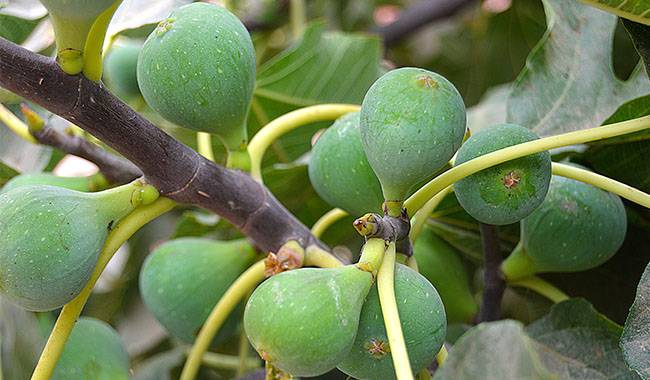
WHY FIGS ARE NOT BIG FOR A LONG TIME
Figs do not start 1 month, or even more than a few months without moving, to ripen, it is very fast, suddenly expanded, two or three days to ripen.
Figs fall fruit cause
Water
Fig foliage, water evaporation, especially in the new tips and fruit rapid growth period requires a lot of water, therefore, the soil is too dry, will affect plant development, making the flesh coarse fruit becomes smaller, the quality becomes inferior, and even make the fruit dry and fall off prematurely before maturity.
Pests and diseases
- nematode: nematode parasites in the fig roots, harming the root system of the young root tissue, making it nodular, causing rot, swelling, root system shrinkage, which leads to plant dwarf, leaf yellowing, early fruit drop, and other symptoms.
- aspergillus: aspergillus damage, aspergillus now under the cortex longitudinal string food, and then cavity into the xylem, deep large trunk center, the victim plant tree weakness leading to leaf and fruit drop, easy to be wind-blown folded, and in serious cases, even lead to plant death.
- Mites: Adult mites and wakame mites gather on the back of leaves, sucking leaf juice, causing leaves to lose their green color and turn yellowish-white, and causing leaf drop, and after the fruit is damaged, the fruit skin is rough and shrivel and drop due to expansion difficulties.
Fertilizer (deficiency)
- lack of nitrogen: lack of nitrogen, inflorescence differentiation number will be reduced, the early fruit type is still normal, but the fruit cross Jing becomes small, maturity will be early and good quality. However, due to the lack of nitrogen in the leaves of many nutrients to the fruit transfer, leaf discoloration is obvious, the fruit of the upper fruit of the fruiting branch drop serious. After fertilization, branch growth will be restored, but the fruit is easy to browning and fruit drop.
- Potassium deficiency: serious potassium deficiency, there will be leaf burning phenomenon, branch tips to stop growing, often with the appearance of scoop-type fruit, potassium deficiency will lead to poor root growth, blackening, peeling and decay phenomenon, which leads to the occurrence of fruit drop.
- magnesium deficiency: magnesium deficiency first in the vigorous growth of the leaves on the wilting symptoms, while the upper and lower appear less, with the symptoms aggravated, the leaves in addition to the petiole parts are yellow whitening, large brown spots, symptoms increased, root growth is inhibited, early fruit drop.
- Calcium deficiency: figs on calcium need a lot, calcium deficiency when the uppermost unfolded leaves suddenly whitening and brown spots, resulting in leaf drop, the lower leaves grow normally, the branches become dark brown and shrinkage, in severe cases, root elongation is obviously blocked, easy to rot and have a special strong organic acid odor, the fruit blackened and fall off early.
- Iron deficiency: when it occurs, the new tips elongation is slow, the new buds whitening withered. In the pre-fertility period, all the young fruit whitening and falling off, such as symptoms appear in the late stage of fertility, the former medium-term fruit can still be normal maturity.
FIG ORCHARD FERTILIZATION TECHNIQUES
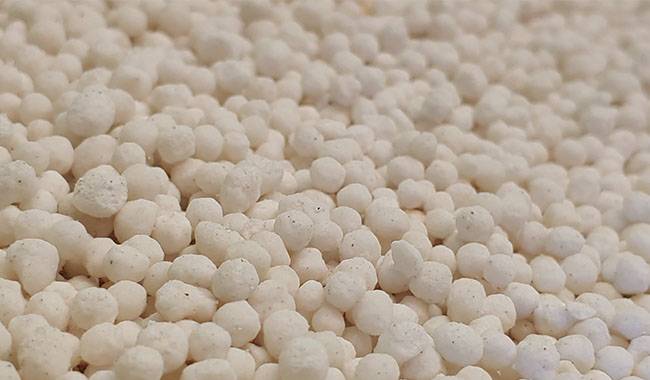
Fertilizer management: Fig young trees during the growth period, such as the base fertilizer is not enough fertilizer should be applied. The method is in about 40cm (15.7inch) from the main root, the plant applied about 5kg of rotten miscellaneous fertilizer; at least 1kg into the potted plant.
Mature trees plant about 15 kg of well-rotted farmyard manure, before and after the fall of leaves into the base fertilizer, chasing fertilizer is appropriate in the new peak period and fruit rapid expansion period is good.
Fig is more fertilizer-tolerant fruit trees, but should be heavily fertilized with phosphorus and potassium, the general ratio of nitrogen, phosphorus and potassium is 0.5:1:1. Because it is more drought intolerant, new growth and fruit expansion period requires more water, but long-term impregnation or waterlogged environment, easy to cause flower drop, fruit drop, leaf drop, and even death, so we should also pay attention to good drainage.
Potted plants should also pay attention to drainage, especially in the heavy rain or rainstorm after the rainy season, pay attention to rain cover or inverted pots to control water.
Fertilization period, divided into base fertilizer and chase fertilizer
1. The base fertilizer fig fertilizer application period can be pruned in November-December after the end of the pruning, but in late February to early March is appropriate to apply.
Figs are not like other fruit trees as deep plowing, fertilizer early application, withdrawn on the surface of the dead leaves, will be lost more with the wind and rain, snow and water. But also should not be applied too late.
After March, the fertilizer will take some time to decompose and penetrate, and the plant will be affected by the absorption and utilization.
The base fertilizer is mainly organic fertilizer, such as livestock and poultry stables, compost, rapeseed cake, etc., and combined with the use of compound fertilizer.
It can supply the nutrients needed by the plants for a longer period of time, constantly replenish the nutrients and restore the tree’s strength. Also, prepare the material conditions for the next year’s growth and fruit.
2. fertilizer fig fertilizer application period, in fig cultivation, divided into pre-fertilizer (summer fertilizer) and late fertilizer (autumn fertilizer).
That is, on the basis of the application of fertilizer base fertilizer according to the characteristics of fertilizer needs of each period to replenish fertilizer, in order to regulate the contradiction between tree growth and results, to ensure high yield, stable yield, high quality.
The specific period and frequency of fertilizer supplementation should be determined according to the growth condition of the plant and soil fertility.
Generally, it is divided into 3-6 times. In high temperature and rainy areas, nutrients are easily lost, so the number of fertilization should be more and the amount of fertilization should be less;
The tree is weak, poor root growth must increase the number of fertilizer; young trees grasp the early application of fertilizer and early application of fertilizer, the late application of less. To promote the new growth of the full, enhance the cold resistance.
Fig plant pre-growth, fertilizer needs more. With the new tip elongation continuous inflorescence differentiation, late May to mid-July for the peak of fertilizer needs, when the fertilizer plays a key role in the whole growth period.
Mainly to solve the contradiction of nutrient supply and demand during the new shoot elongation, fruit development, and tree storage nutrient conversion.
The fruit starts to ripen in late July and is harvested until late October. The harvesting period is up to 3 months. During this period, the tree is strong and healthy, with sufficient nutrients. Mature fruit is large, high yield.
If you ignore timely fertilization, nutrient deficiencies, new tips are weak, poor fruit expansion, especially dense plantations. When the amount of fruit is too much, it is more likely to have a serious nutrient deficit, the tree premature failure.
Therefore. A timely and appropriate amount of fertilizer, both to promote fruit expansion. Increase late yield, improve quality, but also conducive to new growth and tree nutrient accumulation. According to the results of fertilization trials at the Zhenjiang Institute of Agricultural Science in the hilly areas of Jiangsu Province, the results show that
July and mid-August fertilization, fruiting branch growth than no fertilizer 4.2-7.6cm (1.65-2.99inch), each plant fresh fruit production perception increased by 0.97 a 1.65 kg. The yield increase was 12.3%-21%. And the fertilization period is earlier, the effect of yield increase is more significant.
In early September, the autumn roots start to grow, and in October, the fruit harvesting volume is reduced, and it enters the storage nutrient accumulation period.
Late October for late fertilizer (autumn fertilizer) is also very important, at this time for the autumn root growth and development of the period, fertilizer is conducive to restoring tree potential, improve the function of leaf assimilation, increase the storage of nutrients. And the number of stored nutrients accumulated.
For the next year, growth plays a decisive role. But the application period should not be too early, to prevent causing the second elongation of the autumn tips, but the consumption of nutrients; also can not be too late, the application of late. Autumn root growth is slow, the accumulation of stored nutrients is also less.
It is worth noting that the new growth is strong, the secondary tip occurs more trees and young annual trees, cold resistance is weak, prone to frost damage, the late do not need to chase fertilizer.
Fertilization amount of fig fertilization to determine the amount of fertilizer, must be a comprehensive analysis of soil fertility, tree age, and yield goals. And through the fertilization test, in production practice, constantly adjusted to make the amount of fertilizer more in line with the needs of fig growth.
Soil fertility, organic matter, strong trees in the garden, the most fertilizer application than the standard amount of 10%-15% less. The same garden tree strong plant less; tree weakness should be appropriate more. Meet the supply of nutrients to promote strong trees.
But not too much fertilizer at one time, as far as possible in stages, to prevent the root fertilizer concentration is too high and fertilizer damage. The amount of fertilizer applied to young trees is generally 60%-70% of that applied to adult trees.
The amount of fertilizer applied during the young tree period is too much, which can easily cause the branch tips to grow without filling, sprouting many ineffective secondary tips, cold tolerance is reduced, resulting in winter frost damage.
You should avoid using increased fertilization to speed up the garden, although the desire for speed is not achieved, often leading to failure.




